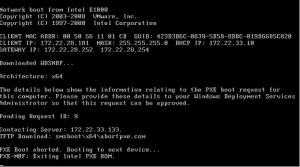Common PC Problems and How to Fix Them



Common PC Problems and How to Fix Them
Our reliance on computers for work, communication, and entertainment makes them an integral part of our lives. However, just like any complex machinery, PCs can encounter issues that disrupt our daily routines. Whether it’s sluggish performance, frequent crashes, internet connectivity problems, or the infamous Blue Screen of Death (BSOD), these common PC problems can be both frustrating and disruptive. In this comprehensive guide, we’ll explore these issues in depth, providing not only solutions but also a deeper understanding of the underlying causes. By the end of this guide, you’ll not only know how to fix these problems but also how to prevent them from recurring.
Sluggish Performance: Why Is My PC So Slow?
Few things are more infuriating than a sluggish computer. If you often find yourself waiting for applications to open, files to load, or webpages to respond, it’s time to dive into solutions:
1. Clear Out Unnecessary Files
Over time, your PC accumulates temporary files, cache, and unnecessary data that can slow it down. Use built-in tools like Disk Cleanup (Windows) or Disk Utility (macOS) to remove these files and free up valuable disk space.
2. Upgrade Your Hardware
Sometimes, a sluggish PC can benefit from a hardware upgrade. Consider adding more RAM to your system, upgrading your traditional hard drive to a lightning-fast solid-state drive (SSD), or replacing an aging graphics card. These hardware enhancements can provide a significant boost in performance.
3. Scan for Malware and Viruses
Malware and viruses can wreak havoc on your PC’s performance. Run a reputable antivirus program to scan for and eliminate any threats that may be lurking on your system. Regular scans are crucial for maintaining a healthy computer.
4. Disable Startup Programs
An excessive number of startup programs can significantly slow down your PC’s boot time and overall performance. Use the Task Manager (Windows) or System Preferences (macOS) to disable unnecessary startup programs that you don’t need running in the background.
5. Explore Task Manager (Windows) or Activity Monitor (macOS)
Task Manager (Windows) and Activity Monitor (macOS) are powerful tools for identifying resource-hogging applications. You can use these utilities to pinpoint which programs are consuming excessive CPU, memory, or disk resources and close or uninstall them as needed.
Frequent Crashes: Why Does My PC Keep Crashing?
Frequent crashes can be not only disruptive but also indicative of underlying issues. Here’s how to tackle this problem:
1. Update Your Operating System
Outdated operating systems can lead to crashes. Ensure your OS is up-to-date with the latest patches and updates, as these often include fixes for known issues that can cause crashes.
2. Check for Driver Updates
Outdated or incompatible drivers can be a common culprit behind crashes. Visit the manufacturer’s website for your hardware components or use a trusted driver update utility to ensure your drivers are current.
3. Investigate Overheating
Overheating can lead to system instability and crashes. Ensure your PC’s fans and cooling system are functioning correctly and free of dust. You can also monitor your PC’s temperature using software tools to identify and address overheating issues.
4. Run Memory and Hard Drive Tests
Faulty RAM or a failing hard drive can cause crashes. Most operating systems include built-in diagnostic tools that allow you to test your memory and hard drive for errors. Identifying and addressing hardware issues can prevent crashes.
5. Review Recently Installed Software
If the crashes started after installing new software, consider uninstalling or updating the problematic application. Incompatibilities or bugs in software can trigger crashes.
6. Check for Conflicting Software
Certain software applications can conflict with one another, leading to system instability. Review your installed software and uninstall any conflicting programs. Updating software to their latest versions can also help resolve compatibility issues.
No Internet Connection: Why Can’t My PC Connect to the Internet?
Losing internet connectivity can be frustrating, especially in today’s connected world. Here’s how to diagnose and resolve this issue:
1. Check Your Wi-Fi or Ethernet Connection
First, ensure that your Wi-Fi is turned on and that you’re connected to the correct network. If you’re using an Ethernet connection, inspect the cable connections for any damage or loose connections.
2. Restart Your Router and Modem
Sometimes, the issue may lie with your router or modem. Power cycle them by unplugging them for about a minute and then plugging them back in. This can often resolve connectivity problems caused by temporary glitches.
3. Disable and Enable Network Adapters
In Windows, you can disable and enable network adapters through the Device Manager. This action can refresh your network connection and resolve connectivity issues that may have arisen from a temporary glitch.
4. Reset Network Settings
As a last resort, you can reset your network settings to their default configuration. Be aware that this will remove your saved Wi-Fi passwords and other network-related settings. Use this option if all other troubleshooting steps fail.
Blue Screen of Death (BSOD): What Should I Do When My PC Displays a BSOD?
The Blue Screen of Death (BSOD) is infamous for causing anxiety among Windows users. However, it’s not just a sign of impending doom. Here’s how to approach it:
1. Note Error Messages
When a BSOD occurs, it typically displays an error message along with an error code. Take note of these details as they often provide clues to the underlying issue. Research the error code online to find potential causes and solutions.
2. Identify Faulty Hardware or Drivers
BSODs can result from hardware or driver problems. Use the error code to research potential causes. Consider updating drivers or checking for hardware issues, such as loose or damaged components.
3. Use Windows Troubleshooters
Windows includes built-in troubleshooters for various issues, including BSODs. Run these troubleshooters to identify and address problems. They can often provide helpful insights and solutions.
4. Restore Your System
If all else fails and you suspect that recent software changes are the cause of the BSOD, you can use System Restore to revert your PC to a previous state when it was functioning correctly. This can help eliminate software-related issues.
Conclusion
Common PC problems are an inevitable part of our digital lives, but they don’t have to be a constant source of frustration. With a deeper understanding of the root causes and effective troubleshooting steps, you can resolve these issues and keep your computer running smoothly. Whether you’re dealing with sluggish performance, frequent crashes, internet connectivity problems, or the occasional BSOD, rest assured that there are solutions available to get your computer back on track.
For more in-depth guidance on resolving common PC problems, optimizing your computer’s performance, and staying informed about the latest technology trends, continue exploring our website. We’re here to provide you with detailed answers and expert insights to enhance your digital experience.








